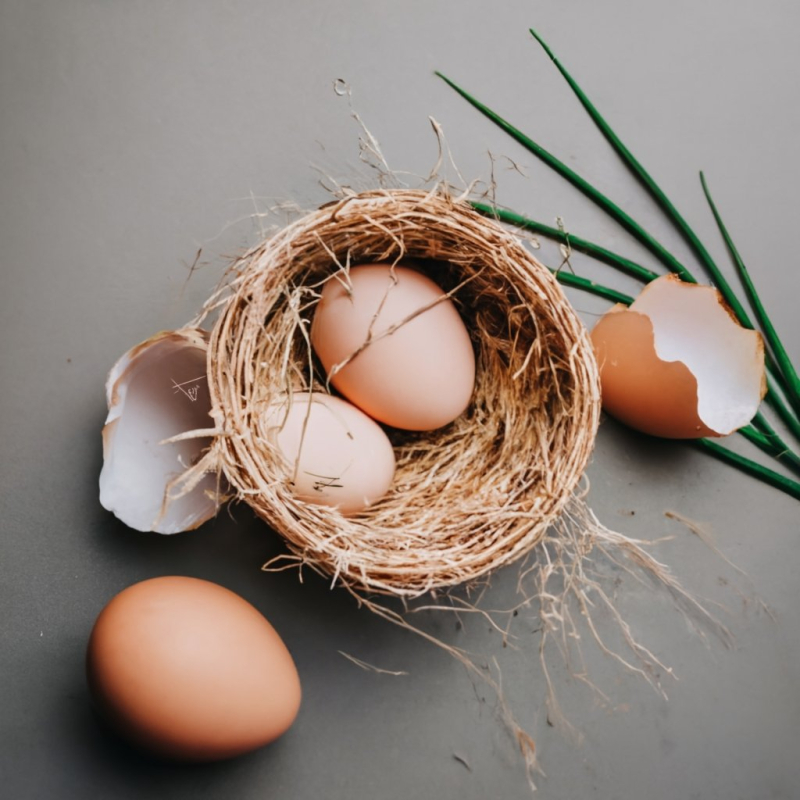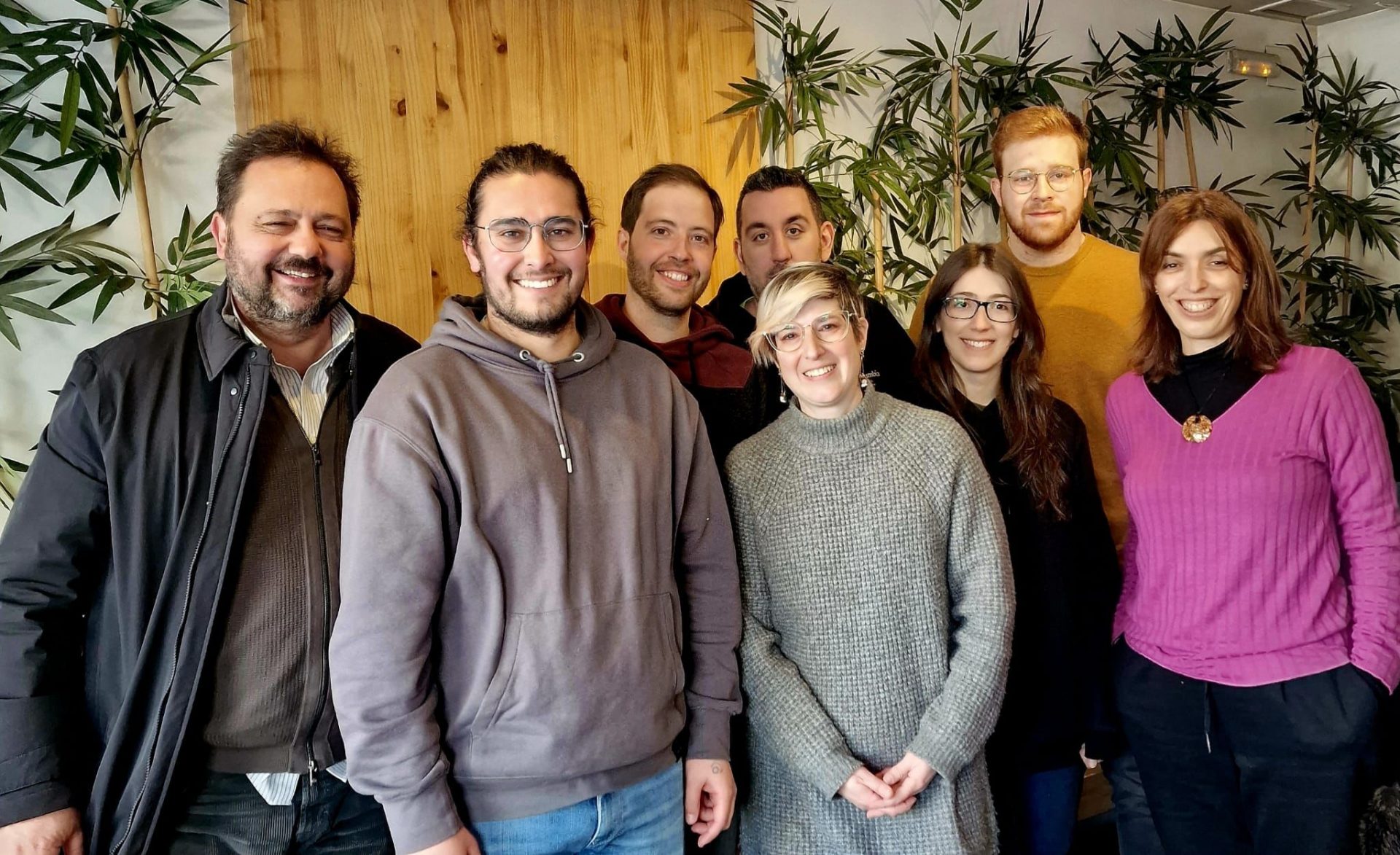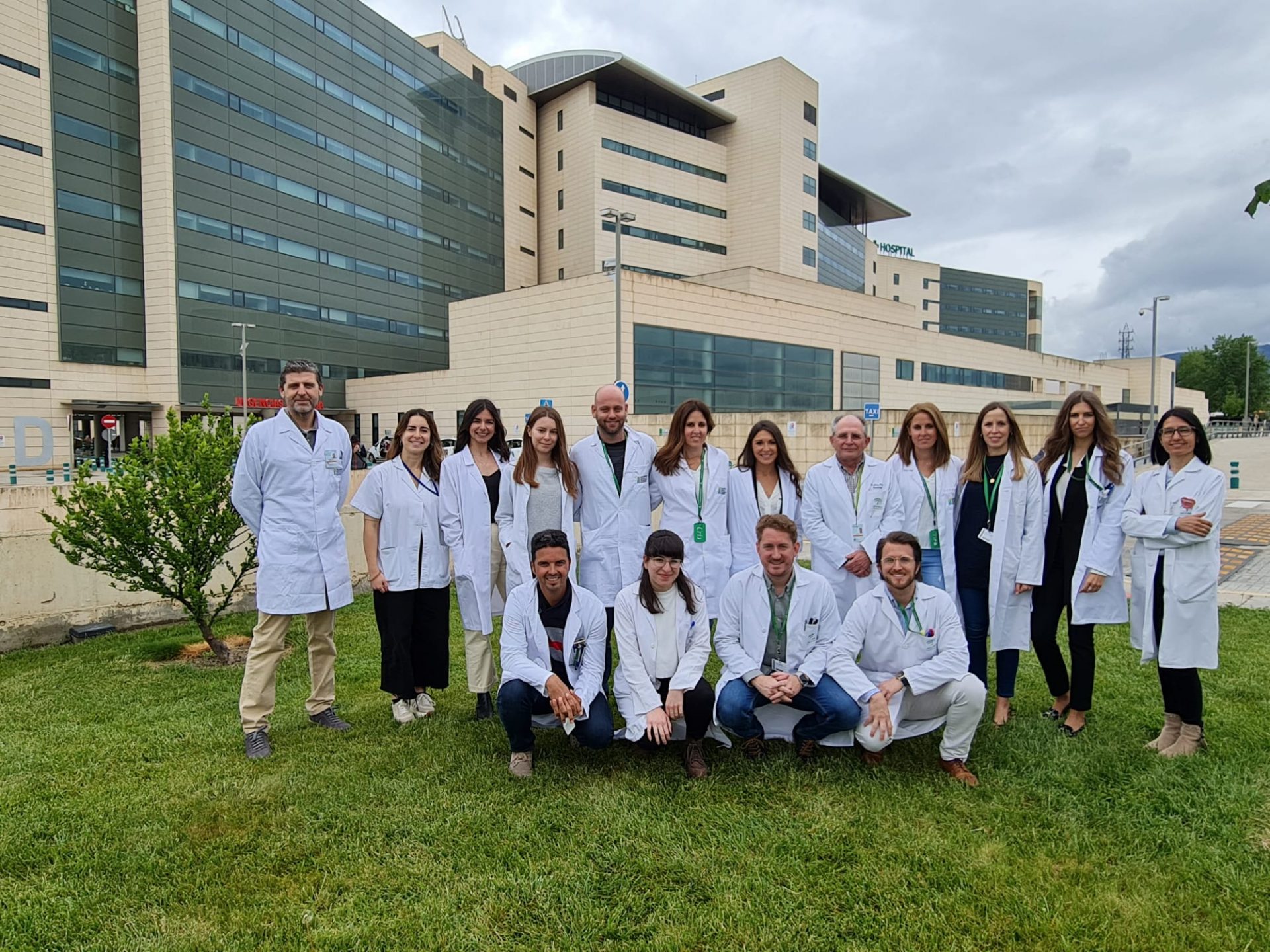
A team of researchers from the University of Granada belonging to the Biohealth Research Institute in Granada (ibs.GRANADA), together with scientists from the Andalusian Earth Sciences Institute (IACT) of the Spanish National Research Council (CSIC), the Universities of Oviedo and Jaén, the National University of Colombia (UNAL), and the Andalusian Health Service (SAS), has developed a new biomaterial made from eggshell membrane. In vitro studies have already shown promising results for this biomaterial in areas of traumatology such as bone regeneration, and in areas of dentistry, such as for coating dental pulp. The project, titled ‘Apatite-coated outer layer eggshell membrane: A novel osteoinductive biohybrid composite for guided bone/tissue regeneration’, has been awarded the 2023 Spanish Institute of Egg Studies (IEH) Research Award. The award was presented at the “Círculo de Bellas Artes” in Madrid and included a prize of 12,000 euros.
Eggshell membrane is a unique biopolymer material composed of type I, V and X collagen fibres, and coated with egg white proteins, eggshell matrix proteins, carbohydrates and hyaluronic acid. The outer layer of the membrane also contains structures known as mammillae, made up of proteoglycans, which are specialised molecules that act as nucleation centres for calcium carbonate, the mineral component of the shell. The composition and function of the outer and inner layers of the membrane are different: while the outer layer promotes calcium carbonate nucleation, and thus shell formation, the inner layer, in contact with the yolk and egg white, inhibits mineralisation. Birds take advantage of this dual role of the membrane to form tough eggshell material — a calcium carbonate shield that protects the embryo from external dangers, whilst at the same time allowing it to hatch easily from the inside. This duality has proved to be a promising feature and was exploited in the study to develop a biohybrid material for future applications in guided bone regeneration and pulp capping.
Guided bone regeneration is a technique widely used in dentistry to promote the regeneration of mandibular bone prior to implant placement, such as in the maxilla, as well as to repair bone defects. Small membranes made of natural (collagen, gelatine, etc.) or synthetic resorbable polymers are used, in addition to a bone graft or regenerative material such as calcium phosphate. The role of these membranes is to act as a physical barrier between the bone tissue and the surrounding gingival tissue, preventing the invasion of cells from the gingival tissue into the bone graft area. They are also used to support new bone formation and must be resorbable to avoid the need for further surgery.
The biomaterial developed in this study consists of an eggshell membrane from a laying hen, coated on its outer surface with nanocrystalline calcium phosphate apatite, preserving its internal surface while preventing mineralisation. “To achieve this, we used an innovative crystallisation technique known as ‘vapour diffusion crystallisation’, which gives rise to the precipitation of nanocrystalline apatite with properties similar to those of the apatite of the bone to be regenerated. The biomaterial obtained is therefore bifunctional, osteoinductive on the outside, and a barrier to cell invasion on the inside, and can replace the materials currently used in guided bone regeneration, i.e. the combination of a membrane and a bone graft. The outer surface of the membrane is therefore similar to mineralised tissues and the inner surface is similar to soft tissues. The membrane is also resorbable,” indicates Jaime Gómez Morales, from the IACT’s Laboratory of Crystallographic Studies and principal investigator of the study.
In vitro studies have confirmed that the apatite-coated eggshell membrane material has improved mechanical properties compared to the membrane itself. It is also biocompatible and can stimulate the growth and development of bone-forming cells, including osteogenic differentiation of mesenchymal stromal cells. “These properties are key to determining the clinical application potential of the material obtained in this study and are guarantors for moving forward with further research. In the same way, this material can also be used in regeneration for injuries to other bones in the body,” explains Juan Antonio Marchal Corrales, director of the UGR’s Unique Laboratory in Biofabrication and 3D (Bio)printing (BioFab i3D).
“With our invention, in addition to guided bone regeneration, we propose other applications such as dental pulp capping. In the case of pulp regeneration, the membrane biomaterial covers accidental exposure of the dental pulp in order to preserve the vitality of the tooth. Currently, the materials used for pulp capping are composed of calcium hydroxide, calcium silicates and composite resins, which pose limitations in their clinical application due to their compositional incompatibility with dental tissues. Our material, on the other hand, contains calcium phosphates, which are the same components found in dental tissues such as dentine or enamel. This makes it a promising and compatible option for pulp regeneration,” says Jaime Gómez Morales.
“Thanks to these positive results, we are committed to optimising its properties so that it can make a significant contribution to medical fields such as traumatology and regenerative dentistry,” adds Juan Antonio Marchal.
In addition, the results of the study have led to publication in the prestigious journal Biomaterials Advances and the registration of patent PCT/ES2023/070274.
Additional information
The following researchers took part in the study:
Dr Adriana Torres-Mansilla (Department of Geology, University of Oviedo); Dr Pedro Álvarez-Lloret (Department of Geology, University of Oviedo); Ana Voltes-Martínez (BioFab i3D, UGR Biomedical Research Centre, University of Granada and Andalusian Health Service); Dr Elena López-Ruiz (BioFab i3D, Faculty of Experimental Science, University of Jaén); Dr Paula Alejandra Baldión-Elorza (Department of Oral Health, Faculty of Dentistry, National University of Colombia, Bogotá); Dr Juan Antonio Marchal Corrales (BioFab i3D, UGR Biomedical Research Centre, University of Granada and Andalusian Health Service); Dr Paula Alejandra Baldión Elorza (Department of Oral Health, Faculty of Dentistry, National University of Colombia, Bogotá); Dr Juan Antonio Marchal Corrales (BioFab i3D, UGR Biomedical Research Centre), and Jaime Gómez-Morales (Laboratory of Crystallographic Studies of the Andalusian Earth Sciences Institute [IACT] and principal investigator of the study).
Bibliographic reference:
Torres-Mansilla A, Álvarez-Lloret P, Voltes-Martínez A, López-Ruiz E, Baldión PA, Marchal JA*, Gómez-Morales J*. Apatite-coated outer layer eggshell membrane: A novel osteoinductive biohybrid composite for guided bone/tissue regeneration. Biomaterials Advances 2023 Aug 26; 154:213605 DOI: https://doi.org/10.1016/j.bioadv.2023.213605
Funding:
BIOSCAFFOLD, ref. PGC2018-102047-B-I00 (MCIU/AEI/FEDER/EU). This project has been conducted in partnership with the projects of the authors Juan Antonio Marchal, Elena López Ruiz and Ana Voltes Martínez, which have provided funding to carry out the biological tests thanks to the Fundación Mutua Madrileña, the “Carlos III” Health Institute (DTS21/00098) and the Regional Ministry of Economy and Universities of Andalusia (PYC20 RE 015 UGR; P20_00208 of 2020), as well as a study credit from the Ministry of Science, Technology and Innovation of Colombia (MinCiencias), which funds the doctoral thesis of Adriana Torres Mansilla.
Contact details:
Juan Antonio Marchal Corrales
Department of Human Anatomy and Embryology
Faculty of Medicine, University of Granada
Biomedical Research Centre (CIBM)
Telephone: +34 958 241 000 +34 958 249 321
Email: @email
Translated version: This text has been translated into English by the Language Services Unit (Vice-Rectorate for Internationalization) of the University of Granada.



